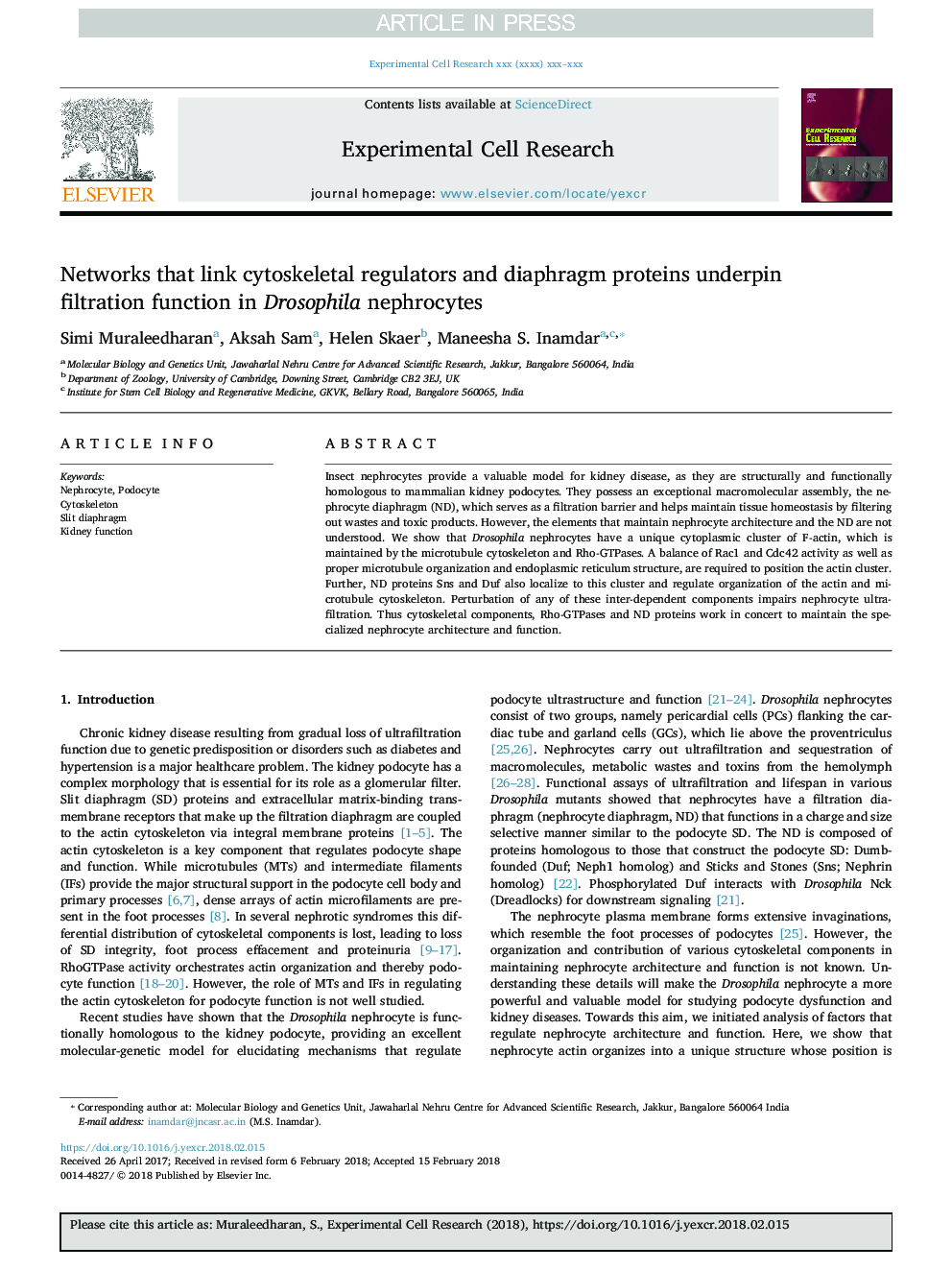| Article ID | Journal | Published Year | Pages | File Type |
|---|---|---|---|---|
| 8451125 | Experimental Cell Research | 2018 | 9 Pages |
Abstract
Insect nephrocytes provide a valuable model for kidney disease, as they are structurally and functionally homologous to mammalian kidney podocytes. They possess an exceptional macromolecular assembly, the nephrocyte diaphragm (ND), which serves as a filtration barrier and helps maintain tissue homeostasis by filtering out wastes and toxic products. However, the elements that maintain nephrocyte architecture and the ND are not understood. We show that Drosophila nephrocytes have a unique cytoplasmic cluster of F-actin, which is maintained by the microtubule cytoskeleton and Rho-GTPases. A balance of Rac1 and Cdc42 activity as well as proper microtubule organization and endoplasmic reticulum structure, are required to position the actin cluster. Further, ND proteins Sns and Duf also localize to this cluster and regulate organization of the actin and microtubule cytoskeleton. Perturbation of any of these inter-dependent components impairs nephrocyte ultrafiltration. Thus cytoskeletal components, Rho-GTPases and ND proteins work in concert to maintain the specialized nephrocyte architecture and function.
Related Topics
Life Sciences
Biochemistry, Genetics and Molecular Biology
Cancer Research
Authors
Simi Muraleedharan, Aksah Sam, Helen Skaer, Maneesha S. Inamdar,
